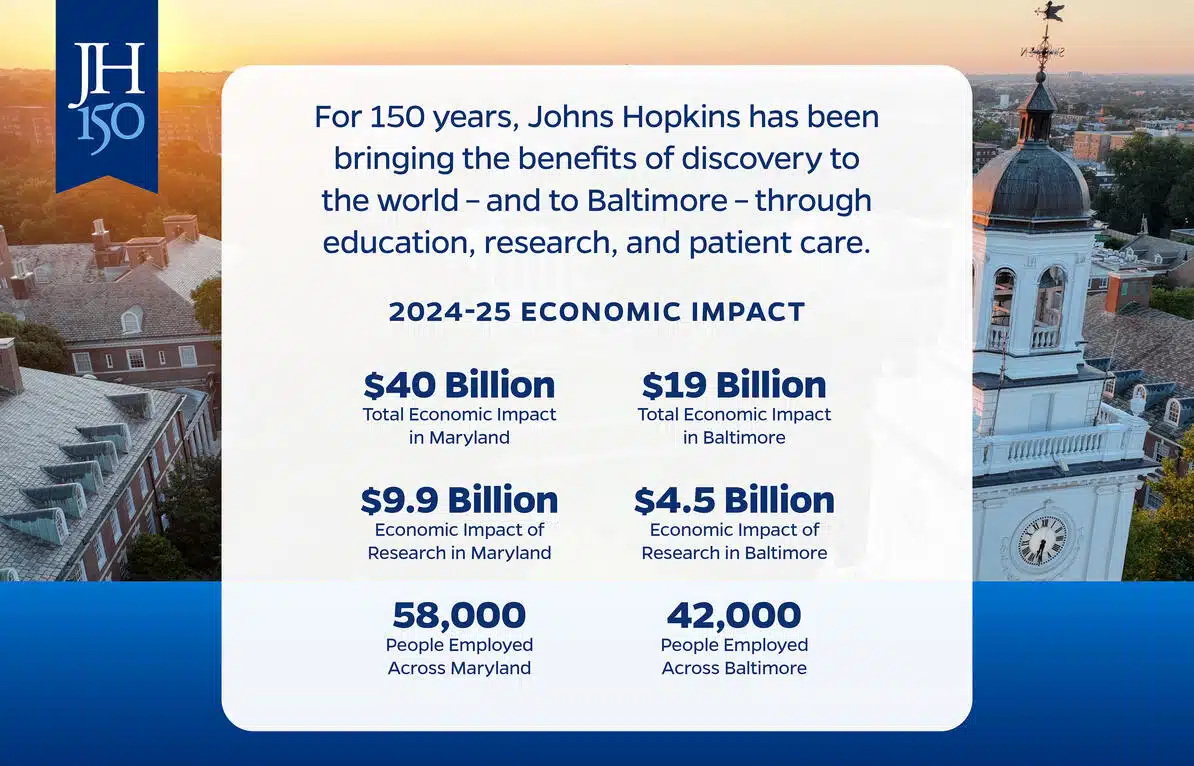Ever-Expanding Innovation: John Hopkins Operations Generated Over $19 Billion In Economic Output in Baltimore City
In total, Johns Hopkins’ consolidated annual operations generated over $19 billion in economic output within Baltimore City; and $40 billion within Maryland. Johns Hopkins is solely responsible for $63.4 million in tax revenues to Baltimore City and $392.1 million to Maryland.









